Can You Take the Steel Toe Out of Boots?
Steel toe boots are not only eye-catching but they also protect your toes from a variety of hazardous conditions. However, one of the most common challenges of owning and wearing steel toes boots is that they can be quite uncomfortable if fit incorrectly.
And that’s a shame. Steel toe boots should actually be just as comfortable as any other pair of boots and also serve as vital protection for your feet.
If your steel toe boots are uncomfortable, there are a number of reasons for this. It could be that you bought the wrong boot size, or your steel toe boots are already worn out. It could also be that you didn’t break in the boots as you should or that they are too old. Steel toe boots can cause problems if you’re standing for long periods, bought the wrong shoe size (uncomfortably tight or loose), or own cheap boots.
If you must, you can remove the steel toe cap from your boots with a hammer, razor blade, shoe glue, and pliers. It’s really simple: just cut the area where the sole meets the uppers, then expand the section to reveal the steel toe cap and remove the steel toe caps with the pliers, then glue the torn areas of the boots back together.
Of course, going to a professional cobbler is the best way to customize your workboots, but if you’re into DIY projects and have an old pair of boots lying around, taking apart and repairing an old pair of steel toe boots might be a fun project.
This article will teach you how to remove the steel toes from your boots quickly and correctly.
[Related: How Tight Should Steel Toe Boots Fit?]
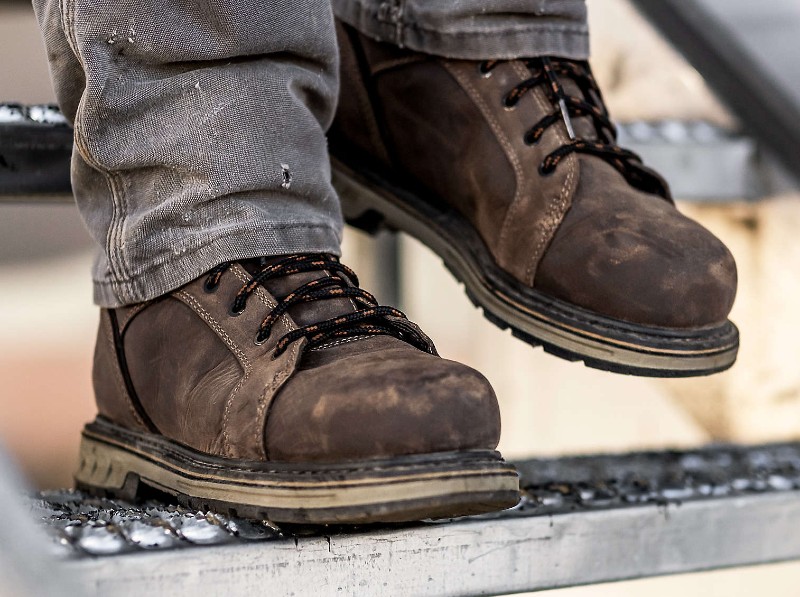
How do you remove the steel toe from your boots?
Ok, you’ve decided you want to take on DIY boot customization with an old pair of work boots.
Let’s take a step-by-step look at how you can remove those steel toes from that retired but special boot.
How to take the steel toe out of boots
- Step 1: Setup
The first thing you should do is place the boots on a high surface, such as a stool, and arrange all of the necessary supplies.
- Step 2: Cut open your boots
Using the blade, create a four-inch incision where the sole and leather meet.
- Step 3: Pull apart the layers
Gently pull and separate all of the pieces without causing any damage to the other sections.
- Step 4:
After you've separated the parts, the steel toe should be visible through the incision you created. Hold the pliers and tighten your grasp on the underside of the steel toes. Try and take out the steel toe (or alloy toe). If the steel toes do not come out easily, turn the pliers handle back and forth or rotate it slightly to pull them out. Your steel toes will now be able to be removed from your boots.
- Step 5: Repair the Boot
The concern now is how you want to repair the ripped portion of the boots. To begin, use the hammer to remove dents by using your index finger to feel the inside side of the toe for any inward bulges. Then, beginning at least 6 inches away from the bulges, hit it with a hammer. Now it's time to apply the glue to join the two torn portions of the boots together. Dry them in the sun or under a dryer once they've been glued together.
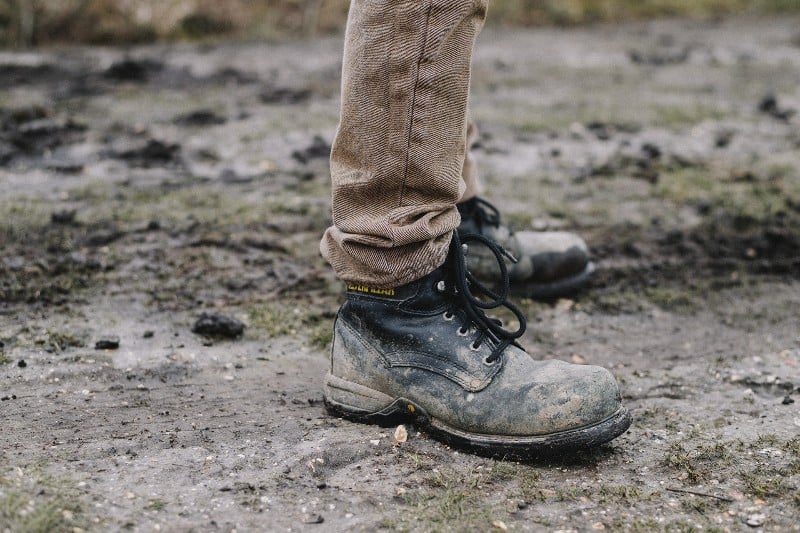
Alternative approaches to removing the steel toe caps from your boots
If you don’t want to take out the steel toe caps because of the protection they provide, there are certain steps to make those hard steel toes more comfortable on your feet.
What if your steel toe boots are too small?
If your steel toe caps hurt your toes, there are a few things you may do to alleviate the pain.
If the boots are slightly too small or too tight there are a few things you can try. You can wear thinner socks. You can also remove the insole from the boot to increase the space inside the toe area. If this works but you want more comfort, try to trim the insole at the toe only. Your toes may stop rubbing against the steel toe caps, giving you more room in the toe box.
[Related: The 12 Best Insoles for Work Boots]
What if your steel toe boots are too big?
If they are too big or too loose, try wearing thicker socks. Buying specialized work boot insoles is also a good idea to help you fill up the extra space in your work boots.
You can pad your steel toe boots with tongue padding as well. Cut the pads into strips and place them inside the steel toe caps’ edges. This will fill up extra space and prevent your toes from getting blisters.
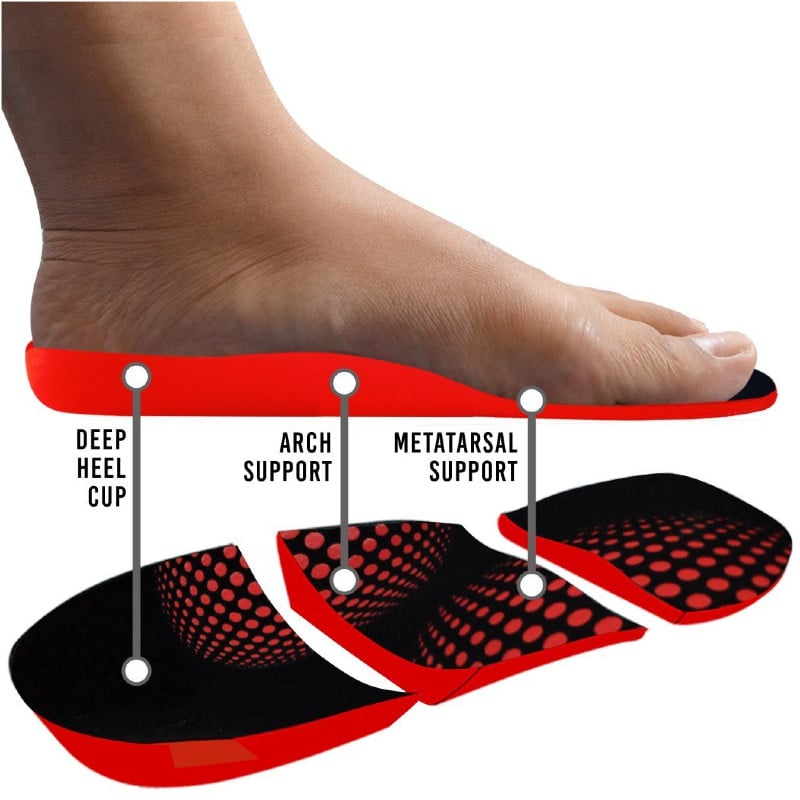
Best Insoles for Steel Toe Work Boots: JobSite Heavy Duty Insoles
To save you a click here’s the best value heavy duty work boot insole we could find.
The JobSite Heavy Duty insoles are specifically made for work boots. They are best for standing on shop floors for long periods of time because they are similar to having an anti-fatigue mat inside your shoes. The JobSite Heavy Duty insoles are also loaded with cushioning throughout the insole and they also work well for walking. These don’t have any hard plastic pieces, so they’re probably best for low- and medium-height arches.
[SHOP JOBSITE HEAVY DUTY WORK BOOT INSOLE HERE]
Foot problems caused by steel toe boots
Wearing steel toe boots that are incorrectly sized or old can lead to a variety of problems.
Chafing
Chafing is a type of foot problem that occurs when a person’s steel toe boots rub against their feet. There are many reasons this happens, including not being broken in or a poor fit.
However, the primary issue is when you purchase a shoe that has the wrong size. Then it starts cutting your toes because the steel toes are hugging your feet tightly. It just contributes to the problem when you choose the wrong boot size. Throughout the workday, the toe stays squeezed inside the boots, and the steel in the toe cap creates abrasion, making each step even more uncomfortable.
[Learn More: The Ultimate Guide to How Boots Should Fit (5 Areas to Look At)]
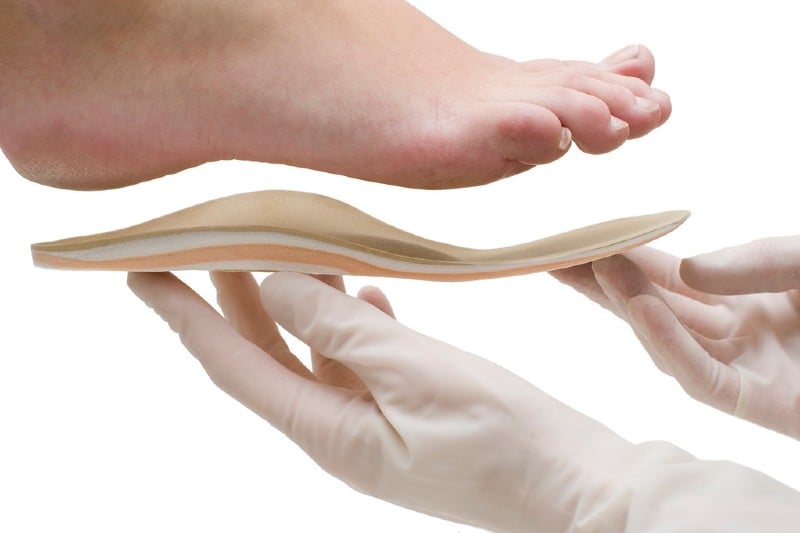
Aches and Pains in the Feet (Sore Feet)
Wearing steel-toe boots is not entirely unlike walking around with ankle weights: you can eventually feel fatigued by the effort it takes to move your feet. Steel toes are made of hefty metal and strong materials. As a result, when you wear them for an extended period, your legs can become sore, particularly after a hard day at work.
Also, if the sizing isn’t perfect the boot’s flex point may not line up with the natural bend of your foot and you might be fighting against the steel shank.
If you’re over 200 lbs you might want to invest in Dr. Scholl’s orthotics for Heavy Duty Support. They may help alleviate the pain a bit.
Blisters
Wearing a loose steel toe boot can cause blisters. Whenever your boot is too loose, the rough surface of the steel plates rubs against the side of your foot, causing chafing and blisters.
Again, this largely comes down to picking the proper shoe size. Were you considering purchasing a work shoe that hugs tightly around your feet? Do you still believe that your shoe will loosen up with time and become more comfortable for your feet? Steel toes do not stretch. As a result, you might expect to encounter the following problems when wearing your tight shoes: blisters, calluses, neuromas, plantar fasciitis, and corns.
[Related: 5 Tips to Prevent Boot Blisters]
Repetitive Strain Injuries (RSI)
This is a condition that can arise when you choose to overlook the problems that your steel toe boots are causing. Your whole body is connected, after all, and bad footwear can cause issues that start in your feet to quickly progress to your knees, neck, spine, and hip.
Conclusion
Steel toe boots have always been a boot of choice for men and construction workers generally. Steel toe footwear is a requirement in many workplaces, especially for workers in construction firms, according to the Occupational Safety and Health Administration (OSHA). When you intend to buy safety toe boots, either soft toe or big toe, ensure that the safety boot fits your foot comfortably. Pay close attention to detail when wearing a new pair of boots for hot spots and other uncomfortable areas.
We hope this article has answered the question of ‘are steel toe boots comfortable,’ ‘are steel toe boots safe,’ and ‘can you take the steel toe out of boots.’
Frequently asked questions: Can you take the steel toe out of boots?
Is removing the steel toes a wise decision?
It's likely not a good idea, you have to cut open and glue your boots back together. Though it is simple to accomplish, but you may end up ruining your boots.
Is it preferable to replace the steel toes with non-abrasive ones?
You can do that, but rather than risk ruining the work boot you already have, consider buying a new pair without the steel toes.
When is it appropriate to remove the steel toe from boots?
Only when you no longer need the protection afforded by a steel toe. So, once you're wearing your boots for casual wear.
Is it possible that wearing steel-toe boots will result in amputation?
This is a pervasive myth: that a heavy object can cause the steel toe to cave in and amputate your toes, whereas they would only be crushed (and healable) if you didn't have the steel toe. In reality, only one occurrence of steel toes cutting off the toes has happened in real life. Need more proof? Watch Mythbusters episode 42.
When it comes to steel toe boots, should you size up or down?
The answer is that your steel toe boots must be large enough to keep your feet firmly in place without confining or cramping them. You only need a small amount of space for your toes to breathe, but not enough to swim around in. Generally, people tend to size down with these boots, so consider getting half a size smaller than your true size and a whole size smaller than your sneaker size.
Do steel toe boots have a break-in period?
Almost all shoes, especially boots, need to be broken in before they're wearable or even comfortable. Although the process could take up to a month, if you are patient and consistent in following the instructions, you may be able to get a proper fit in as little as a week.
Is it safe for people with ailments to wear steel-toe shoes or boots?
Steel-toe shoes and boots are suitable for anyone including people with ailments. Steel toe shoes should only be worn if your job requires them. However, keep the following in mind: Steel is a heavy material. Rather than larger, heavy shoes or boots, you'd want to choose lighter steel toe shoes.
Can steel toe boots be uncomfortable?
No, they are not uncomfortable except if you bought the wrong size of work boot. If you've had your boots for a long period, the soreness could be caused by a worn-out steel toe. Damaged, warped, or bent steel toes are not only unsightly but also dangerous. If it's time to replace the steel toe, there are a few options. You can do it yourself or hire a cobbler to do it for you.
Are steel-toe boots durable?
Steel-toed boots are made to withstand impact and punctures from falling or sharp objects. That means they're built to last for years, even in harsh weather and operating circumstances. This level of resilience is simply not available in regular shoes. It is the main reason most construction and building sites require workers to wear steel toe boots or boots with reinforced toes.
Can a cobbler remove a steel toe?
A cobbler can remove the steel toe from your work boot. It is preferable for a cobbler to remove your steel toe to avoid damage to your favorite or best work boots.
Are steel toe boots allowed in offices?
For instance, in offices like banks, law firms, steel toe boots are usually allowed because they aren't needed for their profession and are seen as too informal. But in organizations like construction firms and the like, steel toe work boots are essential for safety.
What is the maximum force a steel toe boot can withstand?
A typical steel toe boot have a compression resistance of an ASTM 75- pound-foot. In layman's terms, this means it can sustain about 2,500 pound of compression.
How can you widen steel toe work boots?
There are several techniques to widen the width of your steel toe boot. You can try applying a generous amount of vaseline or leather conditioner on the outside of the steel toe work boot, for one. You'll need to apply the lubricant at night so that the boot's leather softens up sufficiently for you to wear it. But steel boot stretchers also make it simple to stretch the boots. If you're willing to purchase one, a shoe stretcher or a boot stretcher may get the job done quickly and effectively: start by applying a steel toe boot stretcher spray to your boots' upper, interior, and insoles. Place the shoe stretcher inside the boots and expand it to its maximum length, then let it sit there for a few hours.
What can I do make my steel toes more comfortable?
When it comes to socks, we suggest ditching cotton socks for wool or a wool blend instead. They're more breathable, plush, and long-lasting. Other solutions depend on the problem, eg. use boot insoles if the boots are too big, or get them stretched by a cobbler if they're too small.



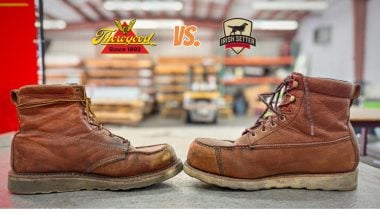
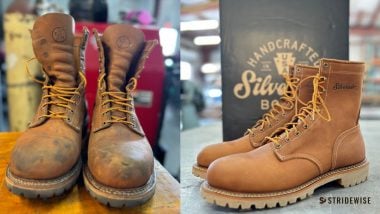
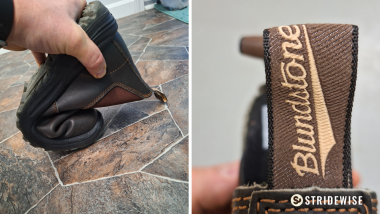


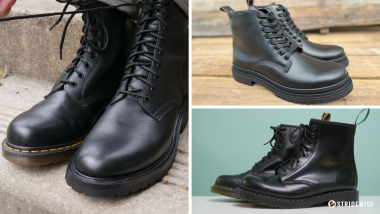


Join the Discussion